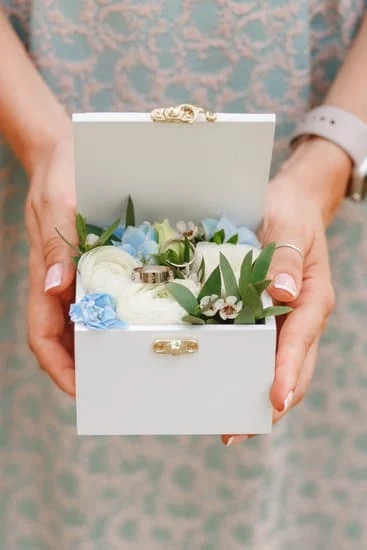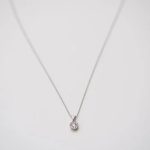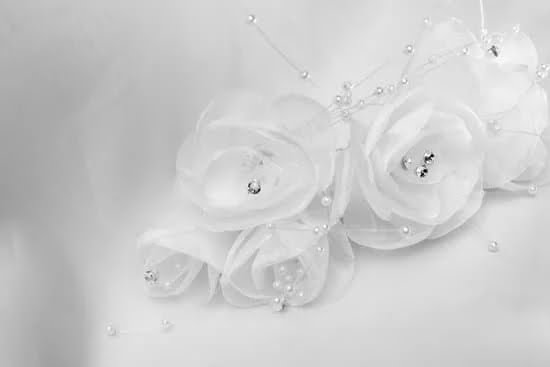Personalized jewelry has become increasingly popular in recent years, as more people seek to express their individuality and create unique pieces that hold special meaning. One essential aspect of creating personalized jewelry is achieving a professional finish through engraving. Whether it’s adding initials, names, dates, or custom messages, engraving can transform a plain piece of jewelry into a cherished keepsake.
However, professional engraving services can be costly and time-consuming. That’s why many individuals are turning to DIY engraving techniques as a more affordable and convenient option. With the right tools and proper guidance, anyone can learn how to engrave their own jewelry and achieve a high-quality, professional look.
This article will provide step-by-step instructions and tips on how to DIY engrave your jewelry to make it look professional. We will explore various engraving tools available in the market and their pros and cons. Additionally, we’ll discuss essential preparatory steps like cleaning and securing the jewelry for an optimal engraving surface.
We’ll also delve into choosing suitable fonts and designs that complement your jewelry’s style. Finally, we will guide you through different engraving techniques such as hand engraving and rotary engraving.
By following these instructions and dedicating time to practice on scrap materials before working on your actual piece, you can avoid common mistakes and achieve flawless results. Stay tuned as we take you through all the necessary steps to assist you in transforming your ordinary jewelry into personalized works of art with a professional touch.
Understanding the Different Engraving Tools
Engraving is a popular technique used to personalize jewelry and give it a professional finish. There are several engraving tools available in the market, each with its own set of pros and cons. Understanding these tools is crucial to making an informed decision about which one to use for your DIY engraving project.
One type of engraving tool is the rotary tool, also known as a handheld engraver or electric engraver. This tool uses a rotating bit or burr to carve designs into the jewelry. Rotary tools are versatile and can be used on various materials, including metal, wood, and glass.
They offer precision and control, allowing you to create detailed engravings. However, they require some practice to achieve smooth lines and consistent depth. It is important to note that rotary tools can be quite loud and may cause vibrations that affect the stability of the jewelry piece.
Another option is laser engravers, which use lasers to etch designs onto jewelry surfaces. Laser engraving offers high precision and accuracy, allowing for intricate details and even complex patterns. It is perfect for engraving delicate materials such as gold or silver. However, laser engravers can be expensive and may not be accessible to everyone. Additionally, they require specific safety precautions due to the use of lasers.
Hand engraving tools are another traditional option for DIY enthusiasts. These tools include gravers or burins that are manually pushed by hand to carve designs into the jewelry surface. Hand engraving requires skill and practice but offers a unique touch with its handmade look. It allows for more artistic freedom but may not be suitable for detailed designs.
| Engraving Tool | Pros | Cons |
|---|---|---|
| Rotary Tool | Versatile, precise, and allows for detailed engravings | Noisy, may cause vibrations |
| Laser Engraver | High precision, suitable for delicate materials and intricate designs | Expensive, requires specific safety precautions |
| Hand Engraving Tools | Offers unique artistic touch and more creative freedom | Requires skill and practice, not ideal for detailed designs |
It’s important to consider factors such as your budget, the type of design you want to create, and your comfort level with different tools when choosing an engraving tool. Experimenting with various options and practicing on scrap materials can help you determine which tool suits your needs best. With the right tool in hand, you’ll be well-equipped to achieve professional-looking results in your DIY jewelry engraving projects.
Preparing the Jewelry for Engraving
Cleaning the Jewelry
Before starting the engraving process, it is crucial to clean the jewelry piece thoroughly. Any dirt, oils, or residue on the surface can affect the quality of the engraving and result in an unprofessional finish. To clean the jewelry, use a mild soap and warm water solution and gently scrub it with a soft-bristle brush.
Rinse it thoroughly and pat dry with a clean cloth. For delicate pieces or jewelry with gemstones, it is advisable to consult a professional jeweler for cleaning to ensure that no damage occurs during the process.
Polishing the Jewelry
After cleaning, it is essential to polish the jewelry to achieve a smooth surface for engraving. Use a polishing cloth or polishing compound specifically designed for jewelry to remove any scratches or imperfections. Apply moderate pressure in circular motions until you achieve a shiny finish. Take care not to over-polish as this can weaken any delicate details in the metal.
Securing the Jewelry
To ensure stability while engraving, it is important to secure the jewelry on a steady surface using clamps or fixtures. This prevents any movement that could lead to mistakes or uneven engraving. If possible, use a vise or clamp specifically designed for holding jewelry pieces securely without causing any damage. Make sure that only the area you intend to engrave is visible and accessible while securing the rest of the piece.
By following these steps and properly preparing your jewelry before engraving, you will create an optimal foundation for achieving professional results. Clean surfaces allow for better adherence of engraved designs while securing the piece provides stability and accuracy during the process.
Choosing the Right Font and Design
Choosing the right font and design is a crucial aspect of DIY engraving jewelry to achieve a professional and appealing result. The font and design elements should complement the style and size of the jewelry piece, enhancing its overall aesthetic value. Here are some tips to consider when selecting fonts and designs for your engraved jewelry:
- Consider the Style: The font and design should align with the overall style of the jewelry piece. For example, if you’re engraving a pendant with a delicate and intricate design, consider choosing a script or cursive font that complements its elegance. On the other hand, if you’re engraving a bold and modern bracelet, opting for a block or sans-serif font may be more appropriate.
- Size Matters: Pay attention to the size of the jewelry piece when choosing fonts and designs. Intricate or detailed fonts may not be suitable for smaller pieces such as rings or charms as they could appear cluttered or illegible. Opt for simpler fonts that allow for better readability in smaller sizes.
- Legibility is Key: Ensure that the chosen font is easily legible and clear to read even after engraving. Avoid overly elaborate or decorative fonts that may be difficult to decipher, especially on small or textured surfaces.
- Personalization Options: Consider personalizing the jewelry by including initials, names, dates, or custom messages in your design. This adds an extra touch of sentimentality while maintaining a professional look.
When it comes to designs, there are countless options depending on your personal style and preferences:
- Symbols: Incorporate symbols such as hearts, stars, flowers, or abstract shapes into your design to give it an artistic touch.
- Patterns: Explore patterns like geometric shapes, lines, waves, or chevrons that can add visual interest to your piece.
- Custom Designs: If you have artistic skills or access to design software, create your own custom design that reflects your unique personality.
Remember, it’s essential to strike a balance between creativity and professionalism. Experiment with different font styles and design elements on scrap material before engraving the final piece. This allows you to visualize how the font and design will look on the jewelry and make any necessary adjustments.
By carefully selecting fonts and design elements that match the style and size of your jewelry, you can achieve a personalized and professional finish that truly stands out.
Engraving Techniques
When it comes to DIY engraving jewelry, there are various techniques you can choose from to achieve a professional finish. Two commonly used techniques are hand engraving and rotary engraving. Each technique has its own advantages and requires different tools and skills. In this section, we will explore these engraving techniques in detail and provide step-by-step instructions on how to execute them effectively.
1. Hand Engraving:
Hand engraving is a traditional technique that involves using hand-held tools to etch designs into the surface of the jewelry. This technique allows for more artistic freedom and control over the engraved lines and details. Here’s how you can execute hand engraving effectively:
- Step 1: Choose the right graver: Select a graver that matches the design and depth of the desired engraving. Different graver shapes create different types of lines, such as V-shape or round shape.
- Step 2: Secure the jewelry piece: Use clamps or fixtures to securely hold the jewelry piece in place, ensuring stability during the engraving process.
- Step 3: Plan your design: Mark out your design lightly on the jewelry surface with a pencil or a fine marker before starting to ensure accurate placement.
- Step 4: Start engraving: Hold the graver at a slight angle against the metal surface and apply gentle pressure while pushing forward in one smooth motion. Practice controlling the depth of your cuts for consistent lines.
2. Rotary Engraving:
Rotary engraving is done using a motorized tool with rotating burrs or cutters that make precise cuts into the metal surface. This technique allows for faster and more efficient engraving but may require additional safety precautions due to high-speed rotating bits. Here’s how you can execute rotary engraving effectively:
- Step 1: Choose the right bit: Select a suitable burr or cutter for your desired engraving task. Different bits create different effects, such as flat cuts or decorative patterns.
- Step 2: Secure the jewelry piece: Just like with hand engraving, use clamps or fixtures to hold the jewelry piece securely in place and prevent any movement during engraving.
- Step 3: Plan your design: Mark out your design on the jewelry surface using a pencil or fine marker to guide your cuts and ensure accurate placement.
- Step 4: Start engraving: Gently touch the rotating bit to the surface of the metal and apply light pressure in controlled movements. Let the tool do most of the work as you guide it along your marked design lines.
Remember, both hand engraving and rotary engraving techniques require patience, practice, and attention to detail. It’s essential to start with simple designs before moving on to more complex ones. By mastering these techniques and following these instructions carefully, you can achieve professional-looking results in your DIY engraved jewelry projects.
Practicing on Scrap Material
Why Practice on Scrap Material?
One of the most important steps in achieving a professional finish when DIY engraving jewelry is to practice on scrap material before attempting to work on the actual piece. Practicing on scrap material serves multiple purposes, including minimizing the risk of costly mistakes and helping you achieve a flawless finish.
Minimizing Mistakes
Engraving requires precision and control, and even the most skilled engravers can make mistakes. By practicing on scrap material, such as an extra piece of metal or plastic, you can familiarize yourself with the pressure and motion required for different techniques without the fear of ruining your final jewelry piece. This allows you to experiment, make adjustments, and gain confidence in your abilities before working on the real thing.
Achieving a Flawless Finish
Engraving is a skill that requires practice to master. By starting with scrap materials, you can refine your technique and gradually improve your precision and consistency. This ensures that when you do engrave your actual jewelry piece, you have already honed your skills and are more likely to achieve a flawless finish.
When practicing on scrap material, try different engraving techniques such as hand engraving or rotary engraving to find what works best for you. Pay attention to the depth and width of each stroke, ensuring consistent lines that appear clean and professional. Remember to take note of what works well and what needs improvement so that you can adjust accordingly when working on your final piece.
Practicing on scrap material not only helps develop your engraving skills but also allows for creativity without limitations or consequences. Use this opportunity to experiment with different designs, fonts, or patterns before committing them to precious jewelry.
By taking the time to practice on scrap material beforehand, you will significantly increase your chances of achieving professional-looking results when it comes time to engrave your actual jewelry piece. So, gather some scrap material, set aside dedicated time for practice sessions, and let your creativity flow as you sharpen your engraving skills.
Adding Personal Touches
Choosing Meaningful Symbols and Designs
When adding personal touches through engraving, it is important to consider meaningful symbols and designs that hold significance to the wearer. One popular option is incorporating initials into the jewelry piece. This can be done by engraving the wearer’s own initials or those of a loved one. Another meaningful symbol to consider is birthstones, which can add a touch of personalization and serve as a reminder of a special day or person in their life.
In addition to initials and birthstones, names can also be engraved onto jewelry to create a sentimental piece. Engraving the name of a loved one, such as a child or partner, can make the jewelry even more meaningful and cherished. Furthermore, dates can be engraved to commemorate important milestones such as anniversaries, birthdays, or graduations.
For those looking for even more personalization options, custom messages allow for endless creativity. Whether it’s an inside joke between friends or a heartfelt message from one loved one to another, custom messages add a unique touch that truly sets the piece apart.
Utilizing Different Engraving Techniques
To enhance the professional look of personalized jewelry, it is essential to explore different engraving techniques that go beyond simply etching letters onto the surface.
One technique that adds depth and dimension to engraved designs is relief engraving. It involves carving away areas surrounding the design while leaving it raised above the surface. This technique adds visual interest and texture to the piece.
Another technique is fill engraving, where intricate designs are filled with enamel paint to create contrast between the engraved lines and the background color. The colors chosen can be customized according to personal preferences or traditional symbolism associated with certain colors.
Additionally, combining different engraving methods such as hand engraving with rotary engraving can produce stunning results. Hand engraving allows for precise control and delicate details while rotary engravers offer speed and efficiency. By combining these techniques, one can achieve a truly professional look that showcases the intricacy of the design.
Considering Placement and Scale
When adding personal touches through engraving, it is important to consider the placement and scale of the design. The size of the jewelry piece should be taken into account to ensure that the engraving is visible and legible without overpowering the overall aesthetic.
For smaller pieces such as rings or pendants, initials or small symbols are often ideal choices. These can be delicately engraved on the inside of a ring band or expertly placed on a pendant’s surface. On larger pieces like bracelets or cufflinks, more intricate designs and longer messages can be engraved without sacrificing visibility.
The placement of the engraving also plays a role in achieving a professional finish. Engraving should be centered, align with existing design elements when applicable, and be positioned in a way that enhances the overall symmetry and balance of the piece.
By considering meaningful symbols, utilizing different engraving techniques, and carefully considering placement and scale, personalized jewelry can truly embody a professional finish while still showcasing individuality and sentimental value. Take time to plan each engraving before making any marks to ensure it aligns with your vision for the final product.
Finishing and Polishing
Once the engraving process is complete, it is important to give the jewelry a proper finishing and polishing treatment to ensure a final professional touch. This step not only enhances the overall appearance of the engraved design but also helps protect the jewelry from tarnish and wear over time. Here are some steps you can follow to achieve a polished finish:
- Cleaning: Begin by cleaning the engraved jewelry using mild soap and warm water. Gently scrub the surface with a soft-bristle toothbrush or cloth to remove any dirt or debris that may have accumulated during the engraving process. Rinse thoroughly with clean water and pat dry with a lint-free cloth.
- Buffing: After cleaning, use a buffing wheel or polishing brush attachment on a rotary tool to buff away any scratches or imperfections in the metal surface of the jewelry. Apply light pressure in circular motions, moving across the entire engraved area for consistent results. This step will help smooth out any rough edges left by the engraving process.
- Polishing: To achieve a high shine, apply metal polish specifically designed for your type of jewelry (such as silver polish, gold polish, etc). Use a soft cloth or cotton ball to gently rub the polish onto the engraved surface in small circular motions. Continue this motion until you see desired shine and remove any excess polish.
- Finishing Touches: For an extra glossy finish, consider using a jeweler’s rouge-a type of polishing compound-to further enhance the luster of your engraved jewelry. Apply a small amount of rouge onto a clean cloth or felt pad and carefully rub it onto the engraved surface in circular motions. Finally, wipe off any residue with a clean cloth.
Remember to handle your finished piece with care after polishing to avoid introducing new scratches or damages. By following these steps, you can give your engraved jewelry a professional and polished look that is sure to impress.
| Steps | Tools/ Materials Needed |
|---|---|
| Cleaning | Mild soap, warm water, soft-bristle toothbrush or cloth |
| Buffing | Buffing wheel or polishing brush attachment on a rotary tool |
| Polishing | Metal polish specific to the type of jewelry, soft cloth or cotton ball |
| Finishing Touches | Jeweler’s rouge, clean cloth or felt pad for application and polishing compound removal. |
Common Mistakes to Avoid
Engraving jewelry can be a rewarding and creative way to personalize your pieces. However, there are some common mistakes that beginners often make when attempting to DIY engrave jewelry. By understanding these mistakes and learning how to avoid them, you can ensure that your engraved jewelry looks professional and polished.
One common mistake is inconsistent lettering. When engraving letters onto jewelry, it’s important to maintain a consistent depth and spacing between each letter. Inconsistent lettering can make the engraving appear messy and unprofessional. To avoid this mistake, take your time and practice your hand movements before engraving on the actual piece. Start with light strokes until you have a steady hand, and use guides or templates to ensure consistent spacing between letters.
Another mistake to watch out for is shallow engravings. Shallow engravings can make the design appear faint and difficult to see. To achieve a deep and clear engraving on your jewelry, apply steady pressure when using rotary tools or hand engraving tools. Make sure to choose the appropriate tool for your desired depth of cut, whether it be a diamond-tipped bur or a graver point. Additionally, check the depth of your cut regularly while working on the piece.
Smudging is another common mistake that can ruin an otherwise beautifully engraved piece of jewelry. Smudging can occur if you touch the freshly engraved surface before it has fully dried or if you accidentally drag ink or paint over the design.
To avoid smudging, allow enough drying time for the engraved area to fully dry before handling it. If painting or inking over the engraving, be careful not to smear ink outside of the design by using precise techniques such as painting within engraved grooves.
By understanding these common mistakes and implementing proper techniques, you can ensure that your DIY engraved jewelry looks professional and polished. Take your time, practice on scrap material beforehand, and pay attention to detail while engraving to achieve flawless results. With practice and patience, you’ll be able to create personalized pieces of jewelry that showcase your creativity and skill.
Resources and Recommendations
When it comes to DIY engraving jewelry, having the right tools and resources is essential for achieving professional-looking results. Here are some recommended engraving tools that can help you on your DIY journey:
- Rotary Tools: Rotary tools are versatile and commonly used for jewelry engraving. The Dremel 4000 Rotary Tool Kit is a popular choice among DIY enthusiasts due to its variable speed settings and wide range of accessories that allow for precise detail work.
- Laser Engravers: If you’re looking for a more high-tech option, laser engravers like the Glowforge Plus offer fast and accurate results. They are particularly useful for intricate designs or for those who want to experiment with different materials like wood or acrylic.
- Hand Engraving Tools: For those who prefer a more traditional approach, hand engraving tools can provide exquisite craftsmanship. The GRS GraverMax G8 System is highly regarded by professionals for its ease of use and versatility in creating intricate designs.
In addition to these tools, there are also online resources available where you can find information, supplies, and inspiration for all your engraving needs.
- Websites: Online platforms such as Jewelry Making Journal and Ganoksin provide comprehensive tutorials, articles, and forums dedicated to jewelry making techniques including engraving. These websites offer valuable insights from experienced artisans as well as tips on sourcing materials.
- YouTube Channels: YouTube has become a treasure trove of DIY videos where experts share their knowledge in easy-to-follow tutorials. Channels like Beaducation and The Jewelry Coach offer step-by-step guides specifically tailored to jewelry engraving techniques.
- Books: If you prefer a more in-depth learning experience, there are several books available that cover the art of jewelry engraving. “The Work of a Master Goldsmith” by Leonard Wyburd is highly recommended for its detailed explanations and beautiful illustrations.
By utilizing these recommended tools, websites, and resources, you can enhance your DIY engraving skills and take your jewelry creations to the next level. Whether you’re a beginner or an experienced crafter, there’s always something new to learn and explore in the world of engraving. So grab your tools and get ready to unleash your creativity.
Conclusion
In conclusion, this article has provided a comprehensive guide on how to DIY engrave jewelry to make it look professional. We explored the different engraving tools available, such as rotary tools, laser engravers, and hand engraving tools, and discussed their pros and cons. Furthermore, we delved into the necessary steps to prepare the jewelry for engraving, including cleaning, polishing, and securing it properly.
The article also offered valuable tips on choosing the right font and design elements that match the jewelry’s style and size for an appealing and professional result. We discussed various engraving techniques like hand engraving and rotary engraving while providing detailed instructions on how to execute them effectively. Moreover, we emphasized the importance of practicing on scrap material before working on the actual jewelry to minimize mistakes.
Personalizing jewelry through engraved initials, names, dates or custom messages was another key point covered in this article. By adding these personal touches, one can enhance the overall professional look of the piece. The proper finishing and polishing steps were also explained to ensure a final professional touch.
Importantly, we highlighted common mistakes to avoid when engraving jewelry, such as inconsistent lettering or shallow engravings. By paying attention to detail and practicing diligently, readers can achieve professional-looking results in their DIY engraving endeavors.
Frequently Asked Questions
What can I use to make my engraving stand out?
To make your engraving stand out, there are several techniques and materials you can use. One popular option is to use contrasting colors or finishes. For example, if you are engraving on a metal surface, you can enhance the visibility by filling the engraved area with enamel or paint that stands out against the background.
Another way to make your engraving stand out is through texture. By varying the depth and width of the engraved lines, you can create a three-dimensional effect that catches the eye. Additionally, choosing a font or design that is unique and visually appealing can also help your engraving stand out.
How do you engrave jewelry on your own?
Engraving jewelry on your own requires some basic tools and skills. First, you will need an engraving tool such as an electric rotary tool or hand graver. Next, choose a suitable jewelry piece made of a material that is compatible with engraving, such as metal or glass.
Clean the surface thoroughly before starting to remove any dirt or oils that may interfere with the engraving process. Then, using a stencil or freehand technique, carefully create your desired design by carving into the surface of the jewelry piece using steady pressure and controlled movements with your chosen engraving tool. Practice on spare materials beforehand to develop your skills and gain confidence in your abilities.
What is the difference between etching and engraving jewelry?
Etching and engraving are both techniques used to design patterns or inscriptions on jewelry pieces but differ in their methods and results. Etching involves applying an acid-resistant substance over the intended design area and then allowing acid to eat away at exposed parts of the metal (or other material), leaving behind a raised pattern. This process is typically more suitable for creating intricate designs with fine details but may result in less pronounced depth compared to traditional engraving.
On the other hand, traditional engraving involves physically cutting into the material’s surface using specialized tools such as gravers or burins. This technique allows for more control over line thickness, depth, and overall aesthetics. Engraving tends to create deeper grooves and a more noticeable contrast between the engraved lines and the surrounding metal, making it an excellent choice for creating bold and enduring designs on jewelry.

Welcome to my jewelry blog! My name is Sarah and I am the owner of this blog.
I love making jewelry and sharing my creations with others.
So whether you’re someone who loves wearing jewelry yourself or simply enjoys learning about it, be sure to check out my blog for insightful posts on everything related to this exciting topic!





